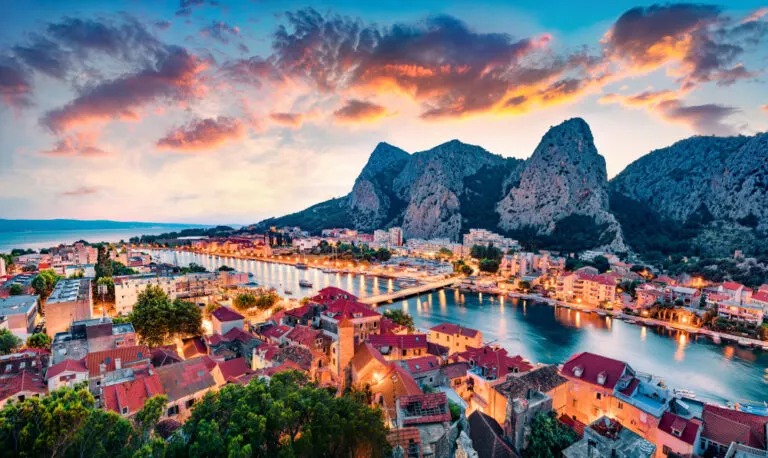Blog
The Best Places to Visit in Croatia in 2023
Croatia is a small country on the Adriatic Sea with less than 4 million people. However, don’t let this size fool you, as Croatia has a lot to offer, and you’ll have a hard time narrowing your list down!
Most visitors to Croatia make a beeline for the coast, and it’s easy to see why. Croatia has over 1,100 miles of coastline.
Along this stretch, you’ll find gorgeous towns dating back to Roman times — some so gorgeous they featured in world-famous films and shows such as Game of Thrones.
The shore and countless islands have something for everyone, from family-friendly shores to party beaches. That doesn’t mean you should make the mistake most tourists make and ignore the interior.
From the laid-back capital Zagreb to the hill towns of the northwestern Istrian region, heading away from the shore will open up a world of beauty. Here are just a few wonders that wait for you when you visit Croatia.
1. Dubrovnik
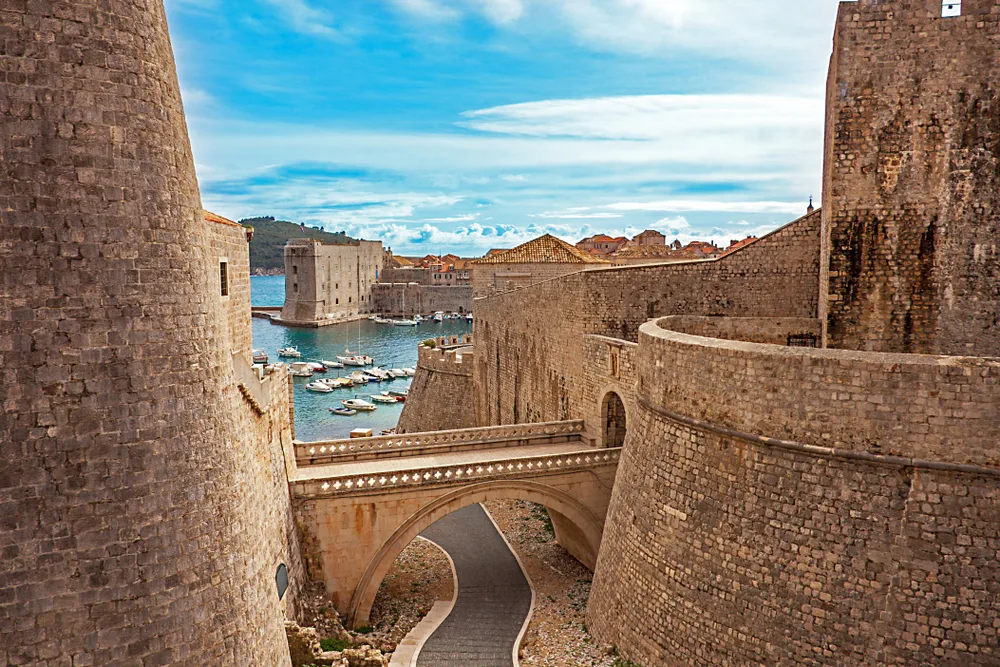
Most visitors to Croatia stop in Dubrovnik, and once you visit, you’ll see why. This spectacular city on the southern tip of Croatia is nicknamed “the Pearl of the Adriatic.” The city was actually an independent city-state at one time, an impressive feat in the dangerous world of the medieval Mediterranean.
Once you see the massive city walls around the Old Town, you’ll understand how Dubrovnik protected its independence for so long (and why the showrunners of Game of Thrones used it as a set).
Other important sites in the Old Town include the cable car up Mount Srđ and the many narrow streets. If you get tired of the busy city, take an excursion to nearby Lokrum for beautiful beaches and relaxation.
2. Plitvice Lakes National Park
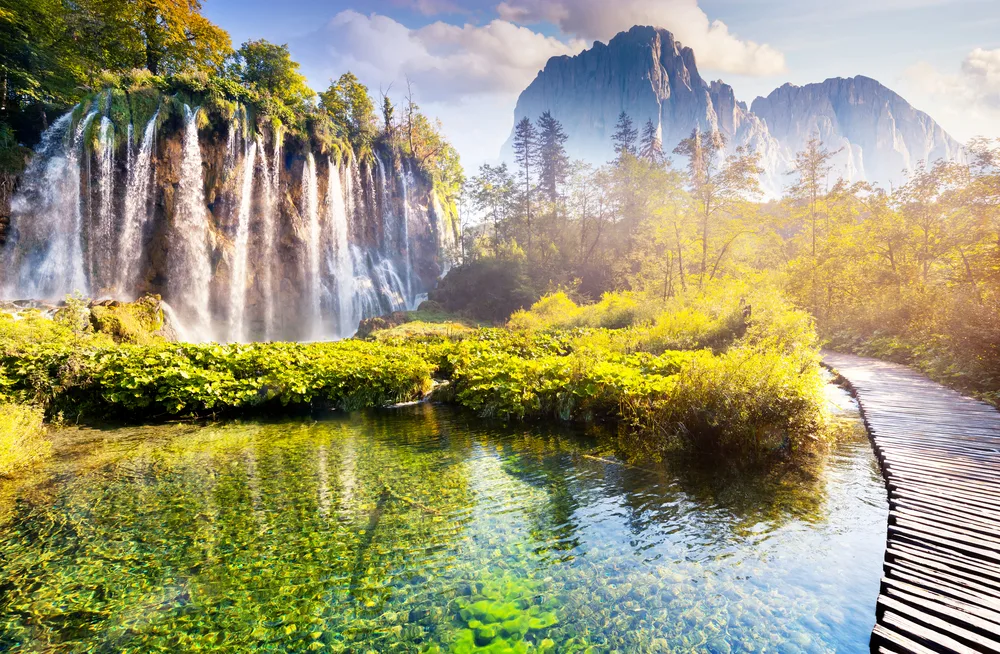
Spectacular Plitvice Lakes National Park is home to some of the prettiest nature in all of Croatia. You’ve probably seen photos of the park before, but no photo can truly capture the majesty of its dozens of turquoise lakes and towering waterfalls.
When you visit Plitvice, walk on the boardwalks along the water to take in the spectacular towering waterfalls.
It does get crowded in the summer, so head off on one of the side trails to explore the mountainous forests around the water. Just remember — swimming is banned to protect the fragile ecosystem, so don’t take a dip.
3. Zagreb
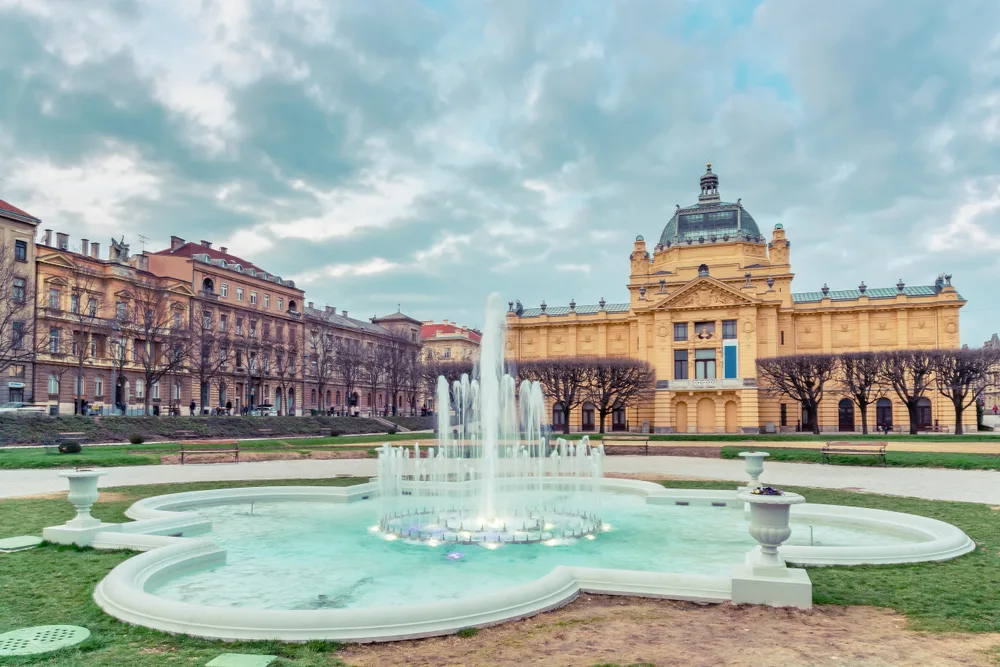
Many tourists just fly into Zagreb before making a beeline for the coast, which is a shame because Croatia’s hip capital has a lot to offer. The city’s centuries of history are best visited in Upper Town, the historic core.
Look at the spires of the city cathedral, which is still under repair, and the colorfully patterned roof on St. Mark’s Square. Zagreb is a museum town, so check out either the stately government museums or some quirky newcomers, such as the Museum of Broken Relationships.
When you’re done with sightseeing, do as the locals do and grab a coffee or drink in one of the many cafés and bars around Ban Jelačić Square. If you come in the morning, you can see the fresh produce on display in Zagreb’s bustling Dolac market.
4. Hvar
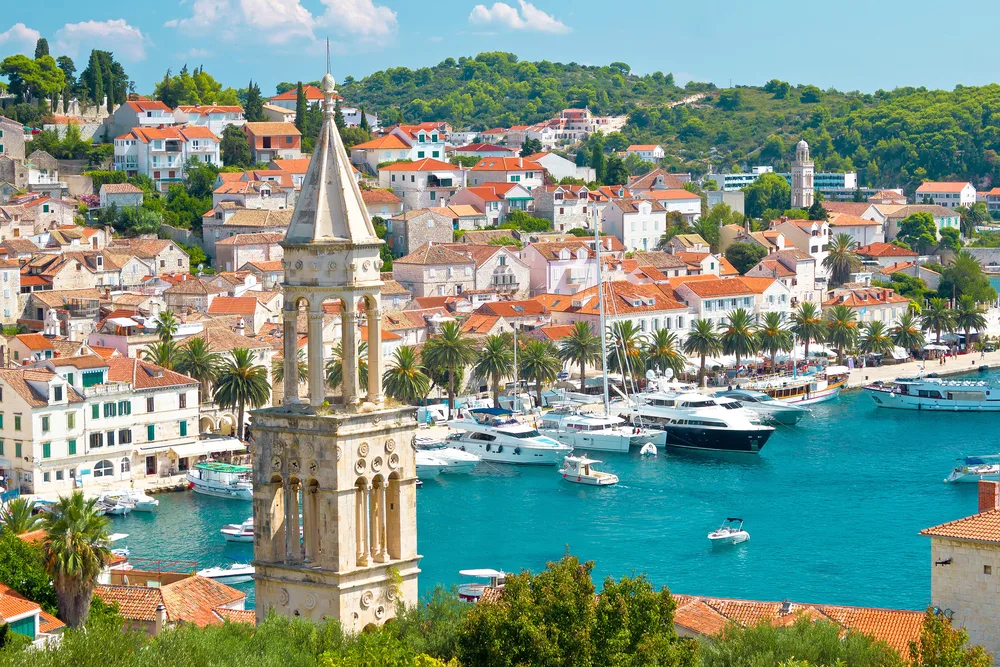
One of the best ways to see the Croatian coast is to go island-hopping. The country’s many inhabited islands (and countless uninhabited ones) have a similar beauty but distinct atmospheres that are a joy to discover. Hvar, one of the largest, has something for everyone.
Recently, Hvar has made a name for itself on the backpacker/young party-seeking traveler circuit. There are plenty of thumping beach bars and clubs if that is what you are looking for.
However, the Old Town also offers stately stone architecture and traditional konobe for a more laid-back atmosphere. Of course, the island also has many beautiful beaches and is close to the nearby Pakleni Islands.
5. Korčula
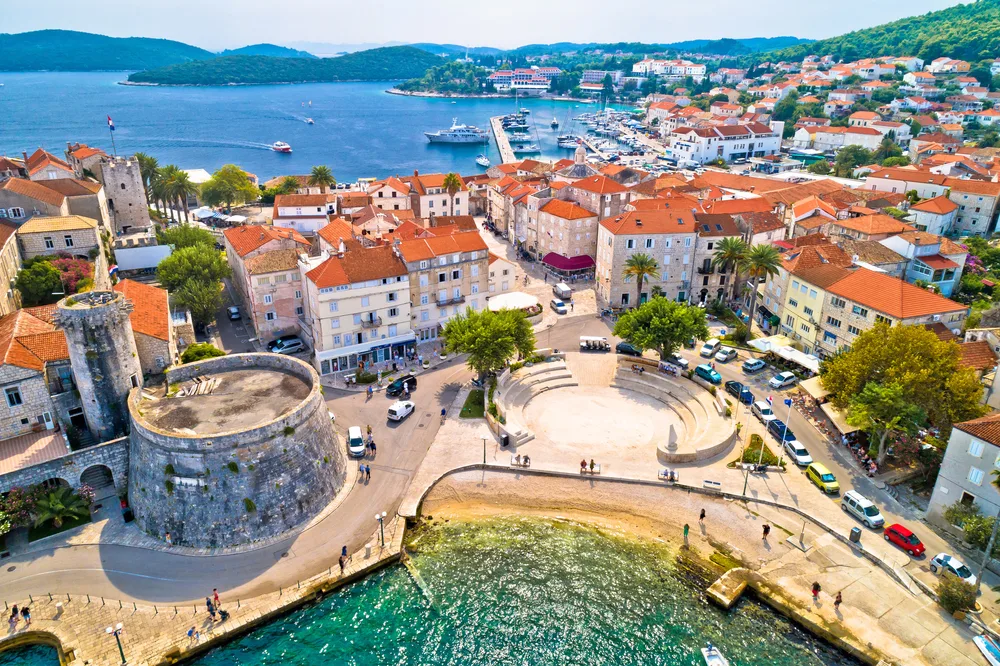
Korčula’s extremely tenuous claim to fame is that it was the birthplace of Marco Polo. The story is probably not true, but when you stroll through the Venetian Renaissance architecture of Korčula Town, Blato, and other settlements, you’ll see why the myth took hold.
The island has many villages and beaches ripe for exploring. Head to Lumbarda for beaches right by ancient ruins or quiet Vela Luka for mountaineering opportunities.
Try to time your visit to coincide with one of the unique local festivals, such as the Kumpanija performance, which also includes sword dancing.
6. Pula
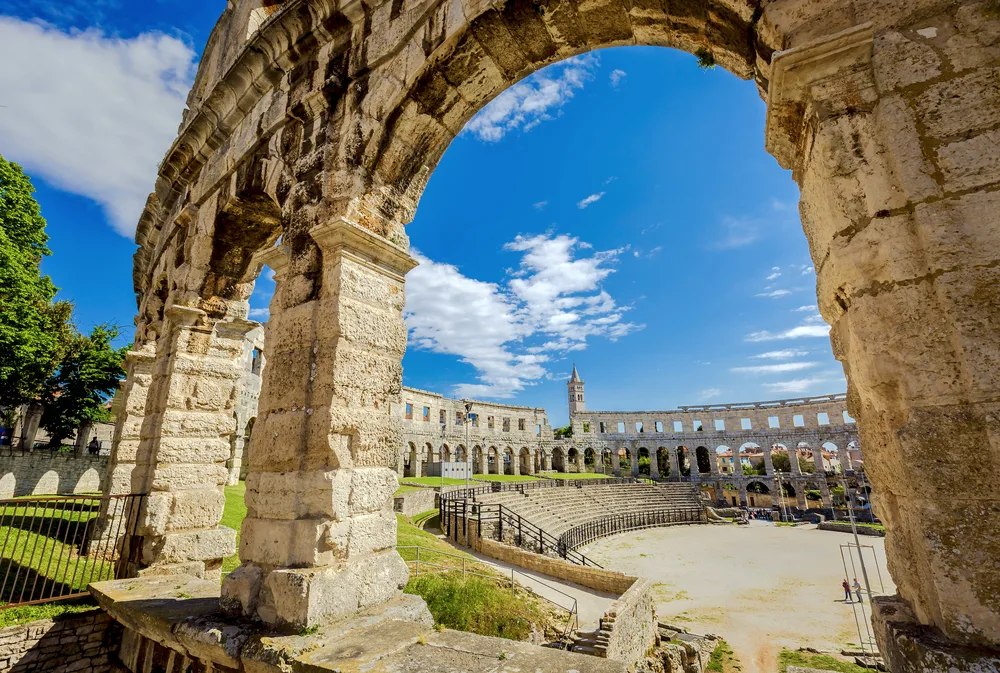
Pula is the largest city on the Istrian peninsula. It packs thousands of years of history into a walkable city core. The Colosseum in Rome may be more famous, but Pula actually boasts the best-preserved Roman amphitheater in the world, the Arena.
In the summer, it hosts concerts, film festivals, and even gladiator fights. Wander the city center for more Roman ruins, including the Forum, as well as a jumble of more recent buildings from the Byzantine and Venetian periods.
When you’re tired of the city, head to the nearby Brijuni Islands National Park or one of the city’s adjoining beaches.
7. Krka National Park
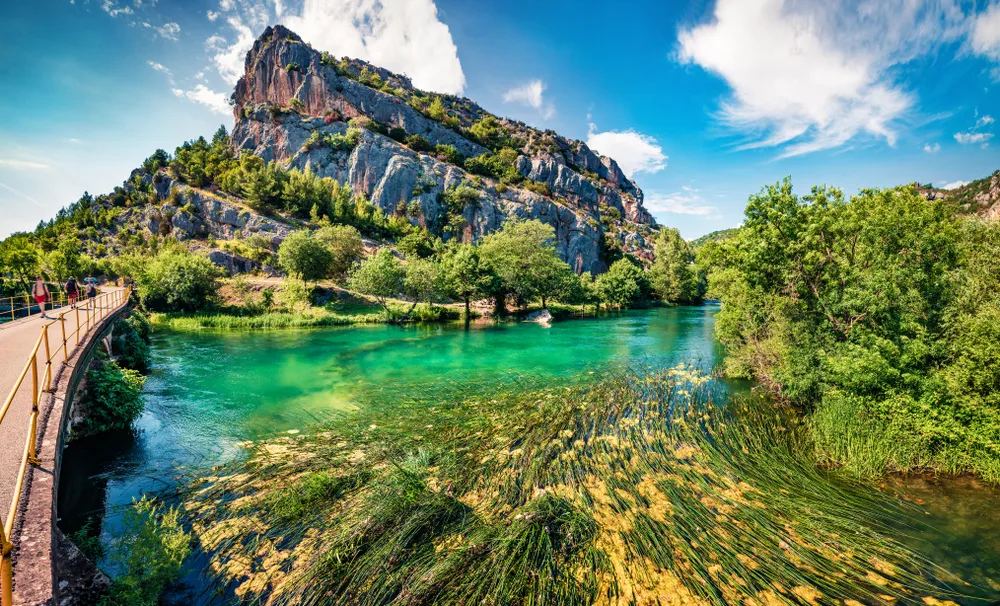
Krka National Park is a spectacular collection of waterfalls, pools, and scenery as far as the eye can see. The spectacular networks of waterfalls that fall one into the other are hard to find anywhere else.
The most popular sites in the park are Skradinski Buk and some of the Roman fortresses, but you can’t go wrong anywhere else you go.
Another thing that sets Krka apart from other Croatian national parks, such as Plitvice, is the fact that you are actually allowed to swim in the waterfalls, so don’t forget to pack your bathing suit.
8. Split
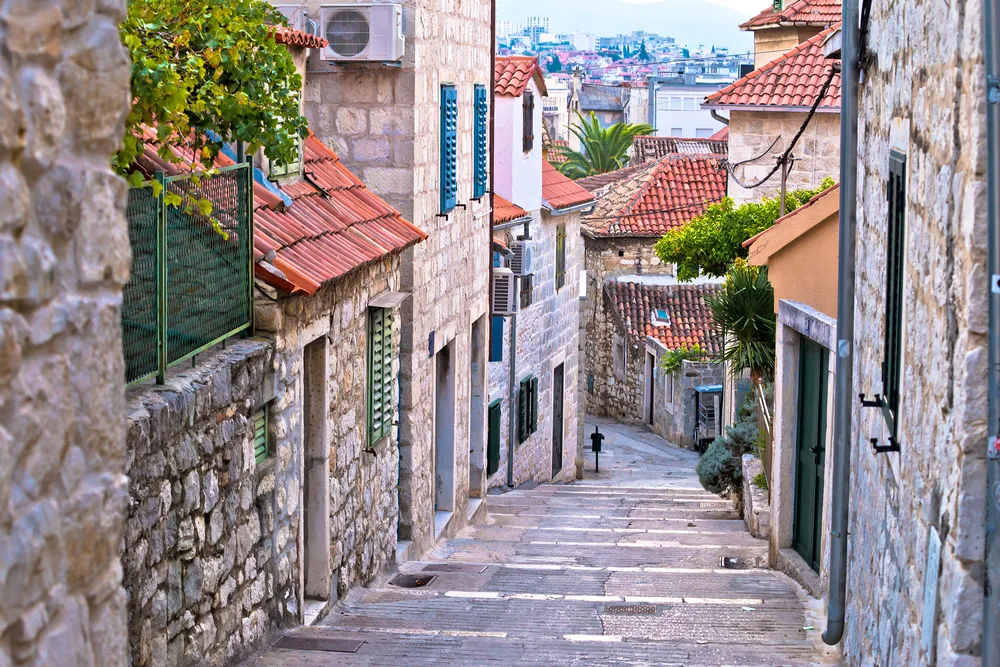
Lively Split is Croatia’s second-largest city and the largest city in the coastal Dalmatian region. It has been inhabited for thousands of years, and its Old Town is a jumble of history. One of the most famous attractions is Diocletian’s Palace.
Originally built by the Roman emperor, a native son, generations of enterprising Split people turned the palace into their own miniature city, adding churches, markets, and more.
People from Split have a reputation in the rest of Croatia for being hedonists, so when in Split, do as the locals do. Linger over coffee, meals, and drinks. In the evening, walk along the Riva, the seaside promenade, where the whole town comes to see and be seen.
9. Rovinj
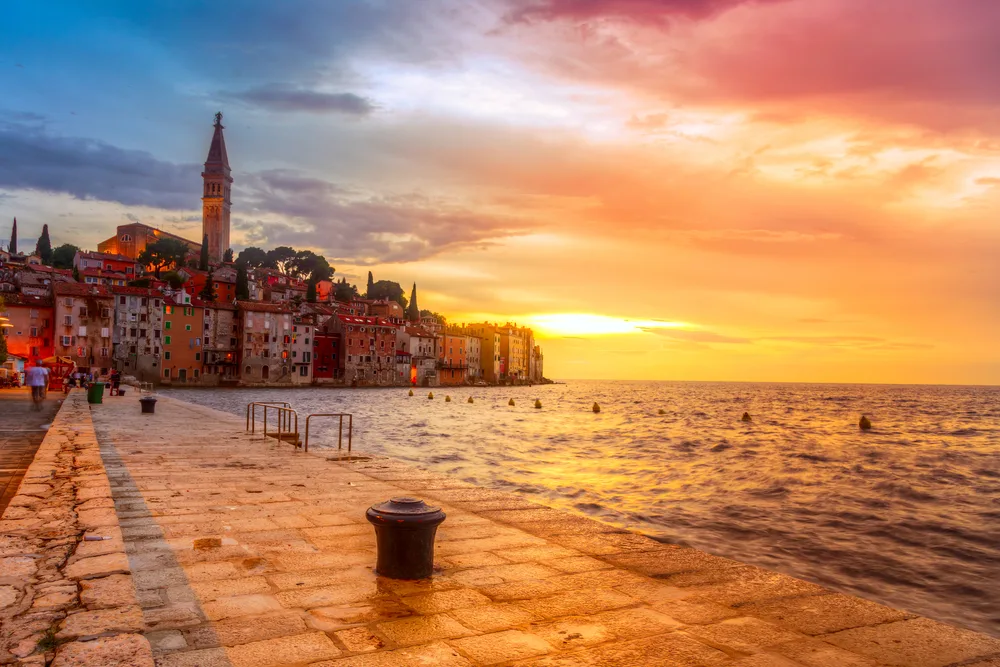
Croatia’s northwestern Istrian peninsula is culturally and geographically distinct from the rest of the country. Under Venetian and then Italian rule for centuries, it boasts traces of this multicultural influence.
Nowhere is this more visible than in Rovinj, a quaint fishing village turned tourist destination. When you reach Rovinj, head to St. Euphemia’s Basilica for the best view of the town.
The best thing to do is wander through the Old Town with no set destination, taking in the gorgeous architecture and relaxed atmosphere. Try to find Carrera Street, a hub for local and visiting artists.
10. Motovun
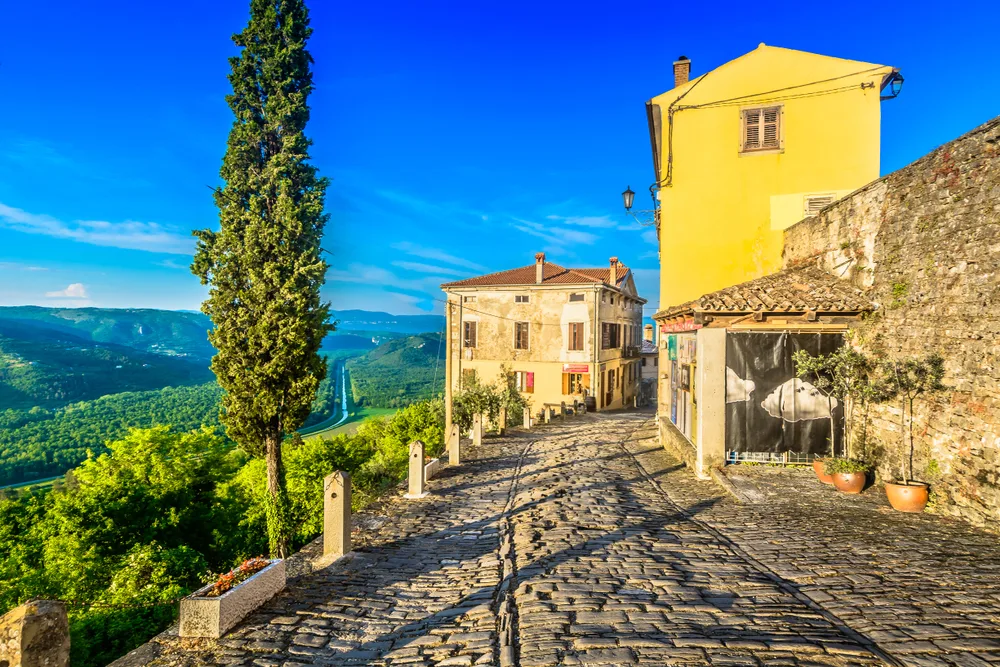
In Istria, it seems as if there is a beautiful town perched on every hilltop or coastal inlet. Motovun is the quintessential Istrian hill town and one of the best places to check out the culture of this unique region.
Walk along the town walls to take in the view of the rolling hillsides below, and explore the well-preserved medieval old town. Istrians have a reputation as the gourmands of Croatia, so be sure to sample some local food.
Motovun is famous as a foodie destination with delicious local specialties sprinkled with shavings of the coveted truffles. Be sure to wash lunch down with a glass of local wine.
11. Mljet
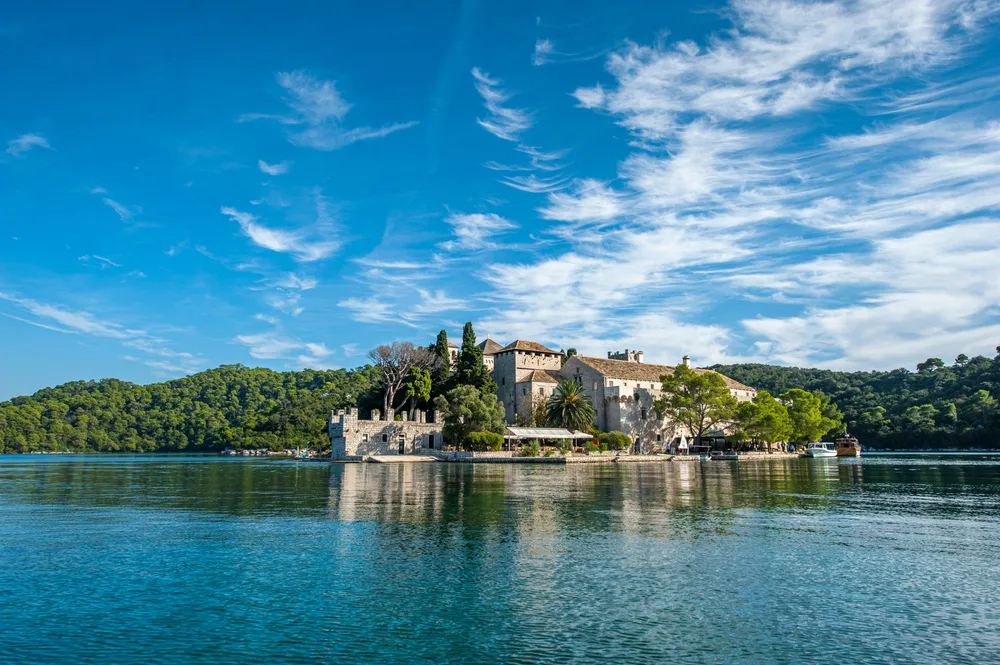
While many of Croatia’s islands are packed with crowds of partying visitors, Mljet retains its untouched natural beauty. The western part of the island is part of Mljet National Park, so many of the forests and coves have been preserved.
Highlights of the park are Veliko and Malo lakes, two lakes with salt water, and an old medieval monastery on the lake.
Legend has it that Odysseus was moored on this island, and you’ll see why he might not have wanted to leave. Swim in the waters, sample local wine, and let the days slip by.
12. Kopački Rit National Park
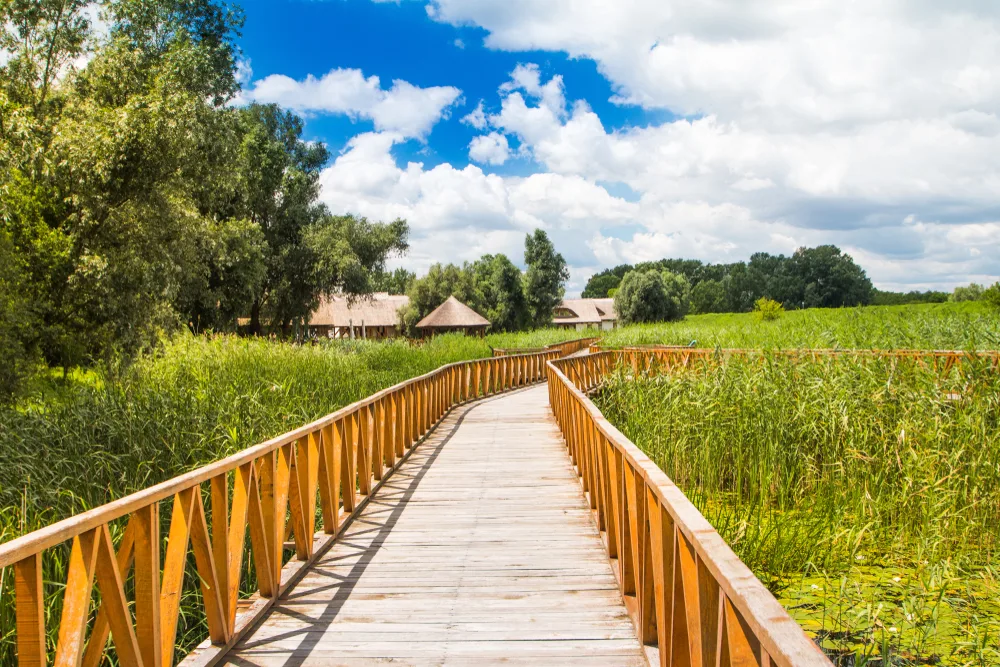
Kopački Rit is located in a part of Croatia where few foreign tourists venture, the eastern border with Serbia. Take the trip out, and you’ll be blessed with Europe’s largest wetlands, nestled between the Drava and Danube rivers.
The park is a haven for birdwatchers, with hundreds of species calling the wetlands home.
A guided boat tour is the best way to learn about the unique biodiversity, but you can also hike the many trails on your own or rent your own canoe, knowing you are far from the crowds.
13. Zlatni Rat
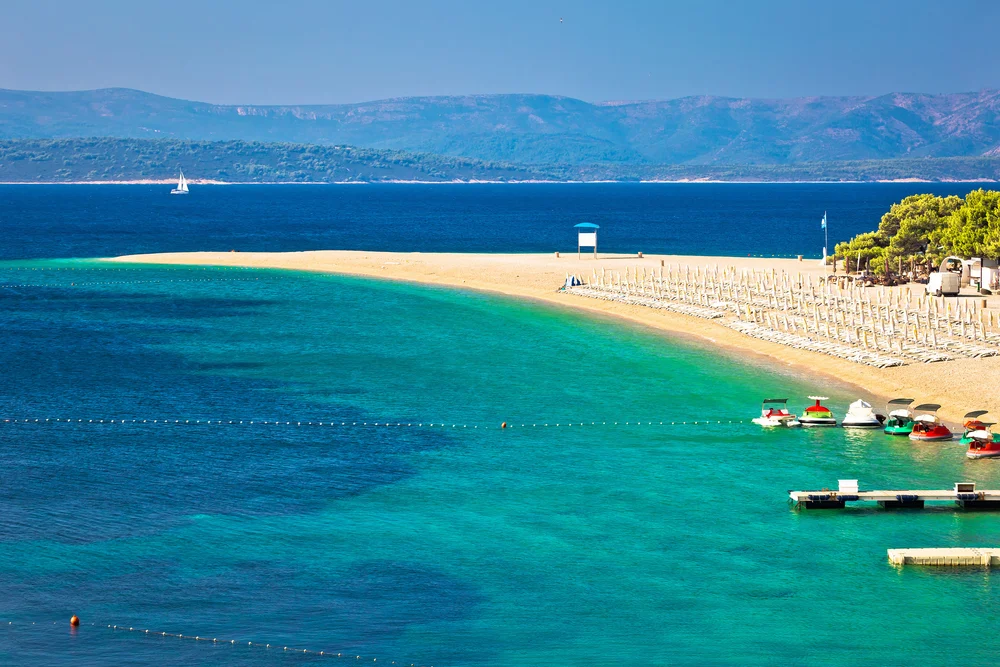
Zlatni Rat, near Bol on the island of Brač, is one of Croatia’s most famous beaches. The distinct golden swoosh of the beach jutting into the water is on the front page of many guidebooks to the country.
Zlatni Rat is a popular destination for windsurfers thanks to the unique wind conditions created between the islands of Hvar and Brač.
It hosts professional windsurfing competitions, but beginners can try their hand in the morning when the wind is gentler. If windsurfing is not your thing, explore the laid-back nearby town or the island’s several mountains.
14. Vis
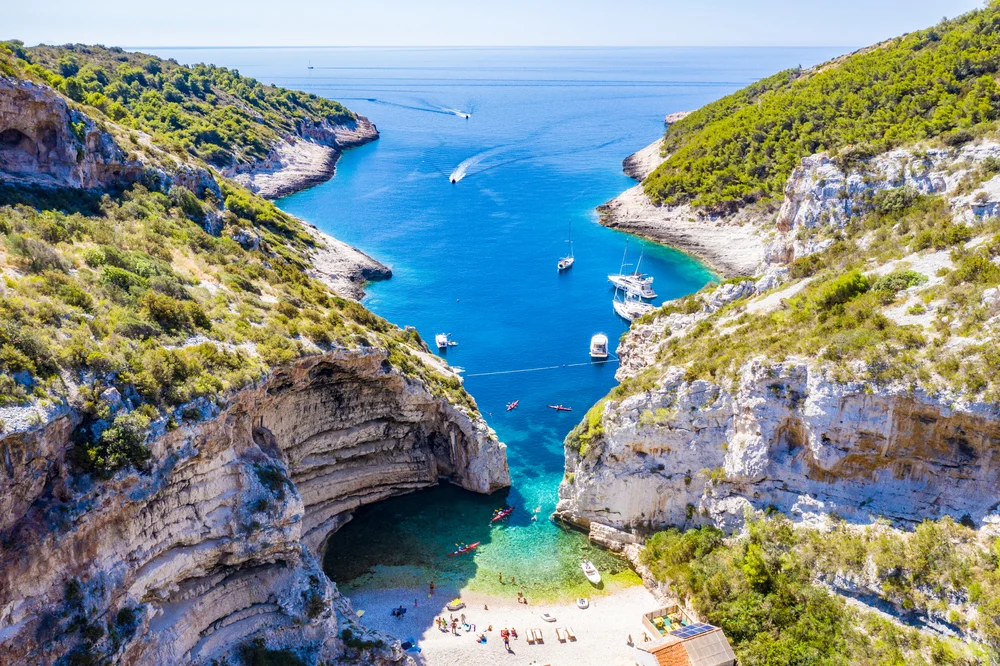
Many Croatian locals might be annoyed to see this island on the list because they were content to keep its secrets to themselves.
The most famous landmark is probably the Blue Grotto, a sea cave where the light conditions create a unique blue color of the water. Take a boat tour to see this wonderful sight.
Besides that, the best thing to do on Vis is to relax. Spend time exploring the hidden beaches and coves. Be sure to spend time at a local konoba, or traditional restaurant, and try local specialties.
15. Trakošćan Castle
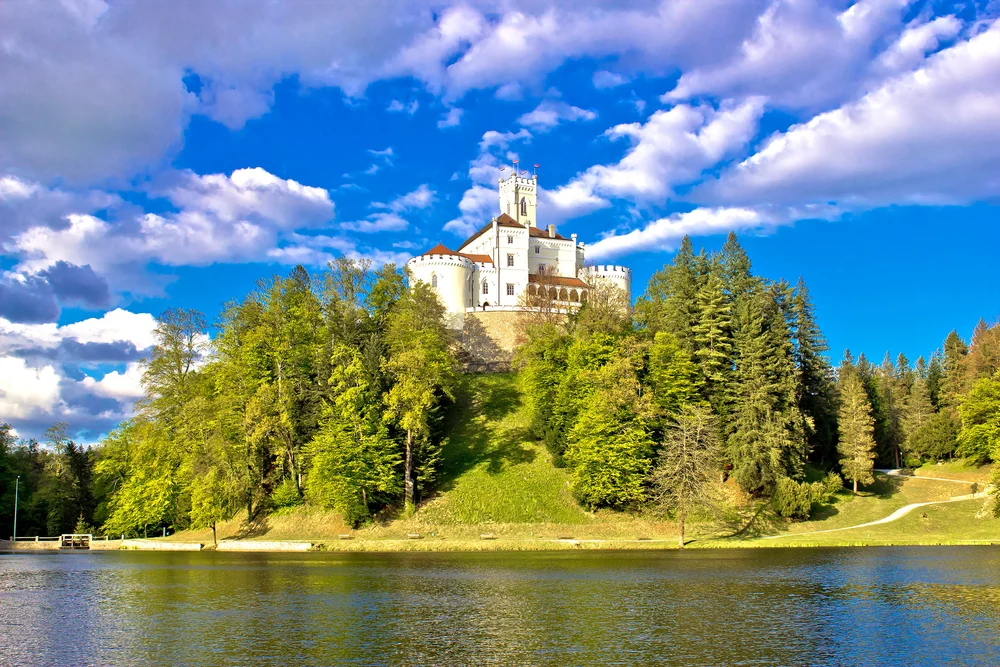
Trakošćan Castle is nestled in Croatia’s northern Zagorje region, a mountainous area near the Slovenian border. The whole region is full of spectacular castles, but Trakošćan is the most impressive.
The façade only dates back to the 19th century but venture inside and explore the dense warren of medieval Gothic buildings dating as far back as the 13th century.
While in Zagorje, you should also check out the local wine and picturesque towns, where locals persist in their traditions, including a local dialect that is unintelligible in the rest of Croatia.
16. Zadar
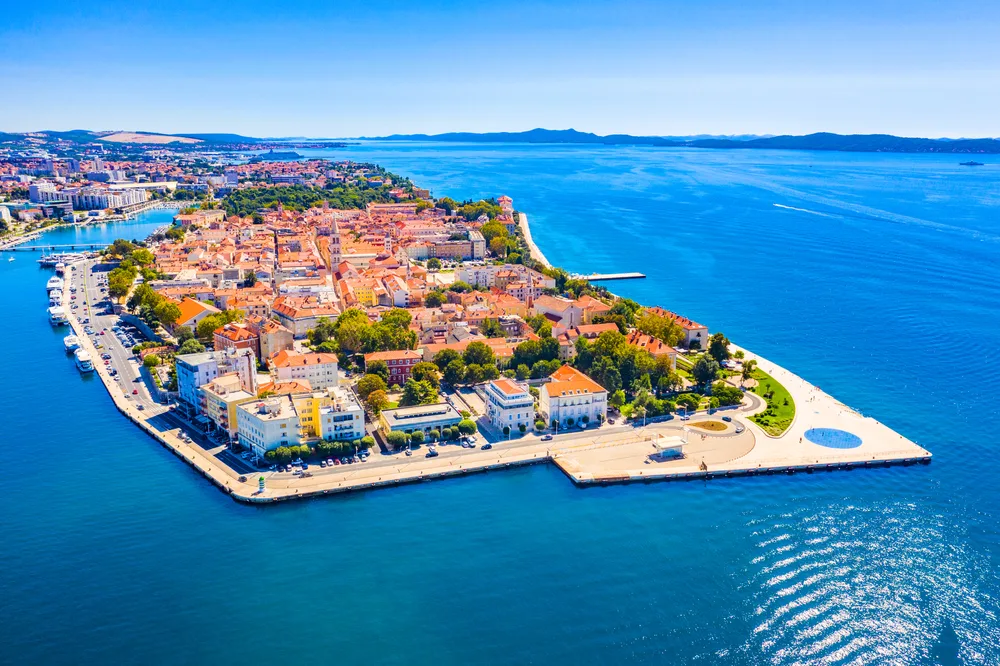
Zadar is not as crowded as some other Dalmatian cities, but it still has so much to offer. The simple circle of St. Donat’s Church, a Romanesque cathedral, is one of the city’s most distinctive symbols, as is the Roman Forum.
At night, catch the sunset by the Sea Organ, an art installation that uses underground pipes to create music from the waves. Zadar is a good town to use as a base for exploring the surrounding islands, from hedonistic Pag with its party beach to untouched Dugi Otok.
Things to Consider
Before you head to Croatia, here are some things to keep in mind. First, you are not alone in wanting to go to Croatia. In the summer, it gets very crowded. As such, be ready to wait, or come in the shoulder season when it is still warm but not as crowded.
Second, Croatia is now a safe country, but 30 years ago, it was subject to a brutal civil war as it gained independence from Yugoslavia. Many of the locals still have painful memories from this time, so try to avoid bringing it up unless they start the conversation.

